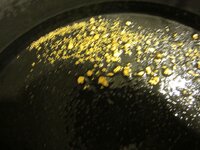mattisdell1983
Jr. Member
- Mar 31, 2012
- 29
- 1
- Primary Interest:
- All Treasure Hunting
hello all, I went to one of our local creeks today that is known for some gold but the weather has been very cruddy and the water level was pretty hight but i saw a few really big rocks and so i started to pan the trailing edge of the rocks where the water was alot smoother but after about an hour of panning the only thing i found was 2 really tiny flakes( about 1/2 the size of a grain of salt). I thought this was a great place to pan for gold...is there any advice on why i may not have caught anything worth taking home? or anything reccomended? Should i try to pry the dirt from under the rock or should i just get as deep as possible? please help out a newbee, thanks alot, matt
Upvote
0





